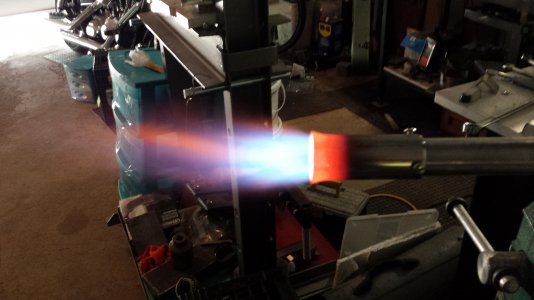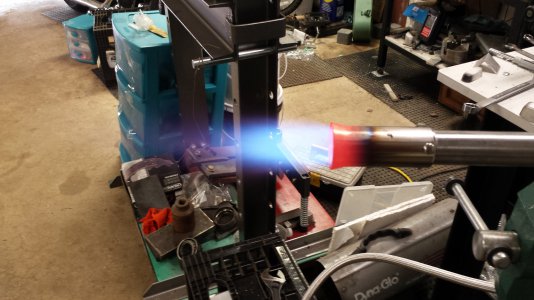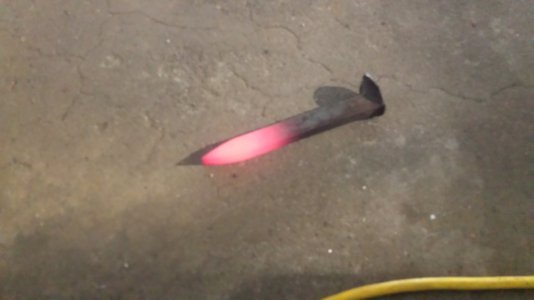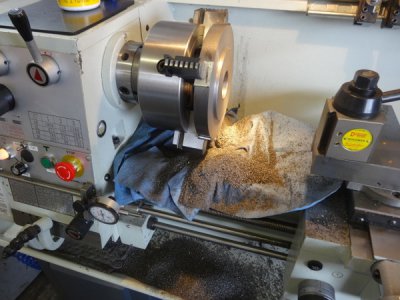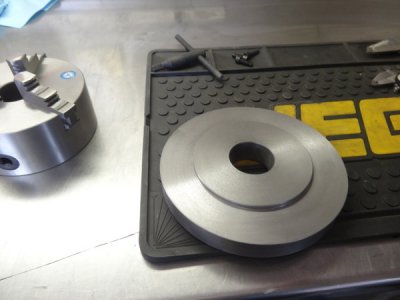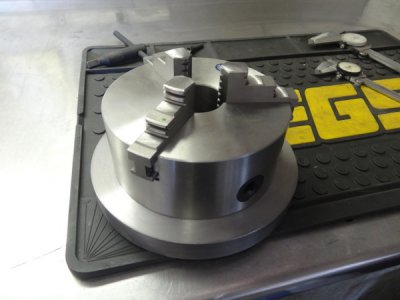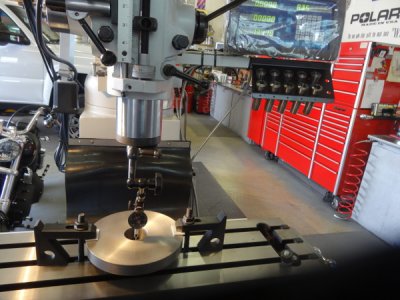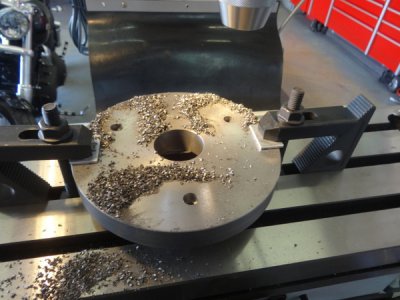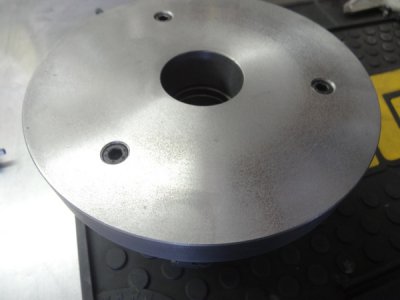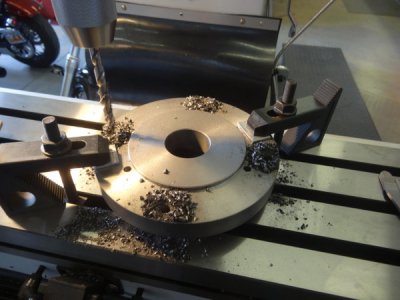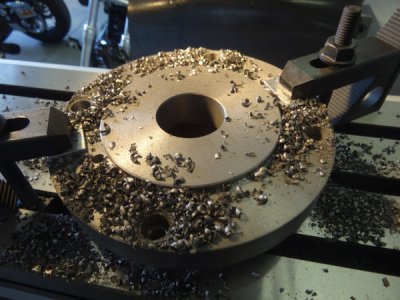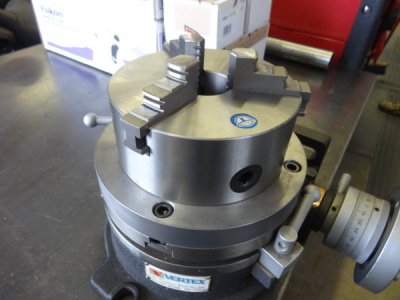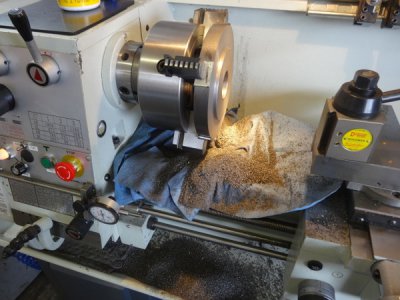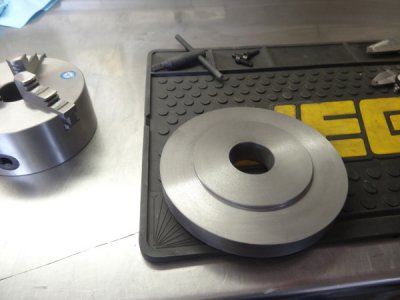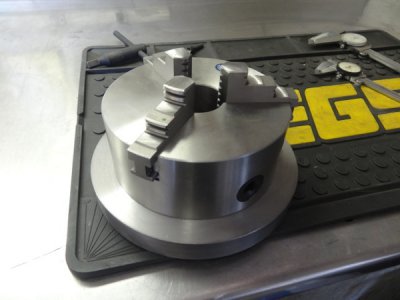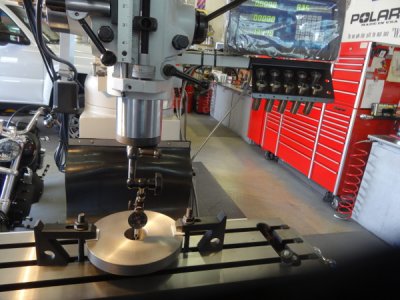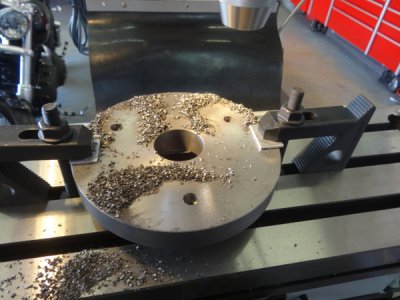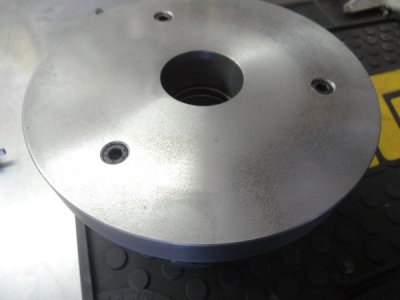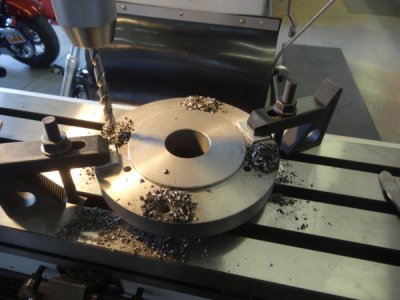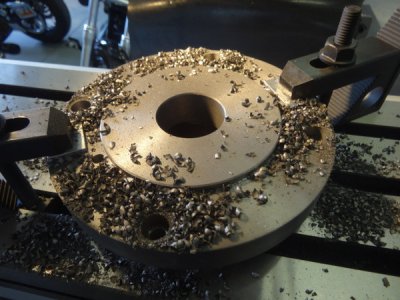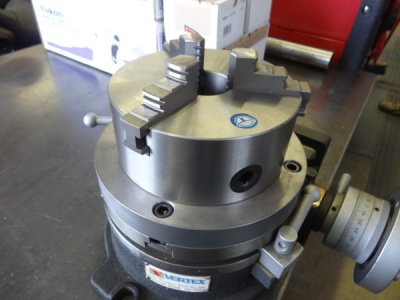- Joined
- Feb 1, 2015
- Messages
- 9,572
In appreciation for taking care of our home while we were in Europe for six weeks last year, we decided to make a brass plaque for our neighbors. The plaque measures 6.5 x 8.25 x .25 and has an old Chinese proverb that describes our neighbors.
Rather than just put the English proverb on the plaque, I decided to put the Chinese characters as well. I found an on-line site that does English to Chinese translations and got the nine Chinese characters that loosely translate to the English.
The characters were copied into an MS Word document. Word seemed to think that they were a font, in fact Times New Roman. "OK", I thought, "this is going to be easy". I then tried pasting them into a SolidWorks sketch. However SolidWorks didn't know how to configure them so just gave question marks instead of the characters. After a number of unsucessful attempts at placing the "text" into SolidWorks, I found an on-line software package called "Inkscape" that could convert a raster image to a vector image that SolidWorks could understand. Each character was individually blown up to full page size in Word and save as a png file. That file was imported into Inkscape and converted to a dxf file. The dxf images were then dropped into a SolidWorks sketch. The conversion is usually imperfect with overlapping lines and breaks. These were manually cleaned up to create a sketch that could be used to make a 3D model.
Chinese characters are drawn with a brush and the strokes have varying widths often ending in a sharp point. Milling with a conventional endmill will leave a rounded feature instead of a sharp. To get around this problem, a 45o angle carbide engraving tool was used. Unfortunately, SolidWorks (or at least I) could not create the 22.5o feature. The SprutCam software that I use to create the G code does have a proviso for certain operations of not to cut into the actual part. That is, it will machine as much as it can of the stock material, leaving the finished part with unmachined stock where it can't physically cut. When cutting a vee shaped profile, the final depth will decrease as the cutter approaches the apex of the vee with the wall angle of the profile equal to 22.5o.
The actual process used cuts everything available at a given depth of cut and then increments to the next depth and repeats. The increment used was .001" to minimize scalloping. The total depth of cut was modeled as .070" although no character required more than .063" The G code generated consisted of 230K lines. Machining time was about 70 minutes.
The English characters were a little more straightforward. A Century Gothic font was chosen for clean lines. A .050 depth of cut was modeled. A 1mm carbide end mill was used to cut the characters. The font characters vary somewhat in width and a trial run in Plexiglas had some breaks in some of the characters. This was solved by assigning a .043" diameter to the 1mm tool. The character width increased by 6.5 thousandths which was actually a desirable side effect. To reduce the chance of breakage of the rather fragile tool, the depth of cut was set at .0025". The G code for this portion of the machining was 190K lines. Machining time was about 60 minutes.
The combined machining G code files were too large for the SprutCam memory to handle so the machining was broken into two separate operations. The outline was cut in a third operation.
A recess was cut on the back side of the plaque to provide for hanging. A capture plate was machined and inlaid, being held in place with two 2-56 screws. The plaque was hand finished to remove blemishes and machining marks on the front surface. Sheets of SiC wet or dry paper were used on a flat surface. Straight line sanding with a horizontal grain was used. The grit size started with 150 and progressed through 240 and 360. Finishing was halted there to give a brushed look to the piece. No protective coating was applied as I wanted to leave that option open to the recipients. If they wish, a coat of automotive clear coat will be used. Otherwise, it will be left to develop a natural patina over time.

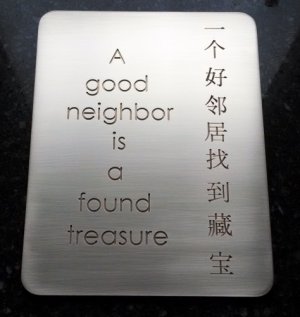
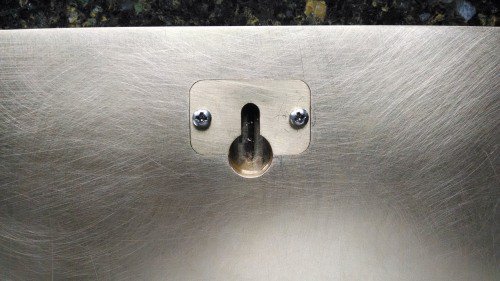
Rather than just put the English proverb on the plaque, I decided to put the Chinese characters as well. I found an on-line site that does English to Chinese translations and got the nine Chinese characters that loosely translate to the English.
The characters were copied into an MS Word document. Word seemed to think that they were a font, in fact Times New Roman. "OK", I thought, "this is going to be easy". I then tried pasting them into a SolidWorks sketch. However SolidWorks didn't know how to configure them so just gave question marks instead of the characters. After a number of unsucessful attempts at placing the "text" into SolidWorks, I found an on-line software package called "Inkscape" that could convert a raster image to a vector image that SolidWorks could understand. Each character was individually blown up to full page size in Word and save as a png file. That file was imported into Inkscape and converted to a dxf file. The dxf images were then dropped into a SolidWorks sketch. The conversion is usually imperfect with overlapping lines and breaks. These were manually cleaned up to create a sketch that could be used to make a 3D model.
Chinese characters are drawn with a brush and the strokes have varying widths often ending in a sharp point. Milling with a conventional endmill will leave a rounded feature instead of a sharp. To get around this problem, a 45o angle carbide engraving tool was used. Unfortunately, SolidWorks (or at least I) could not create the 22.5o feature. The SprutCam software that I use to create the G code does have a proviso for certain operations of not to cut into the actual part. That is, it will machine as much as it can of the stock material, leaving the finished part with unmachined stock where it can't physically cut. When cutting a vee shaped profile, the final depth will decrease as the cutter approaches the apex of the vee with the wall angle of the profile equal to 22.5o.
The actual process used cuts everything available at a given depth of cut and then increments to the next depth and repeats. The increment used was .001" to minimize scalloping. The total depth of cut was modeled as .070" although no character required more than .063" The G code generated consisted of 230K lines. Machining time was about 70 minutes.
The English characters were a little more straightforward. A Century Gothic font was chosen for clean lines. A .050 depth of cut was modeled. A 1mm carbide end mill was used to cut the characters. The font characters vary somewhat in width and a trial run in Plexiglas had some breaks in some of the characters. This was solved by assigning a .043" diameter to the 1mm tool. The character width increased by 6.5 thousandths which was actually a desirable side effect. To reduce the chance of breakage of the rather fragile tool, the depth of cut was set at .0025". The G code for this portion of the machining was 190K lines. Machining time was about 60 minutes.
The combined machining G code files were too large for the SprutCam memory to handle so the machining was broken into two separate operations. The outline was cut in a third operation.
A recess was cut on the back side of the plaque to provide for hanging. A capture plate was machined and inlaid, being held in place with two 2-56 screws. The plaque was hand finished to remove blemishes and machining marks on the front surface. Sheets of SiC wet or dry paper were used on a flat surface. Straight line sanding with a horizontal grain was used. The grit size started with 150 and progressed through 240 and 360. Finishing was halted there to give a brushed look to the piece. No protective coating was applied as I wanted to leave that option open to the recipients. If they wish, a coat of automotive clear coat will be used. Otherwise, it will be left to develop a natural patina over time.





 .
.
